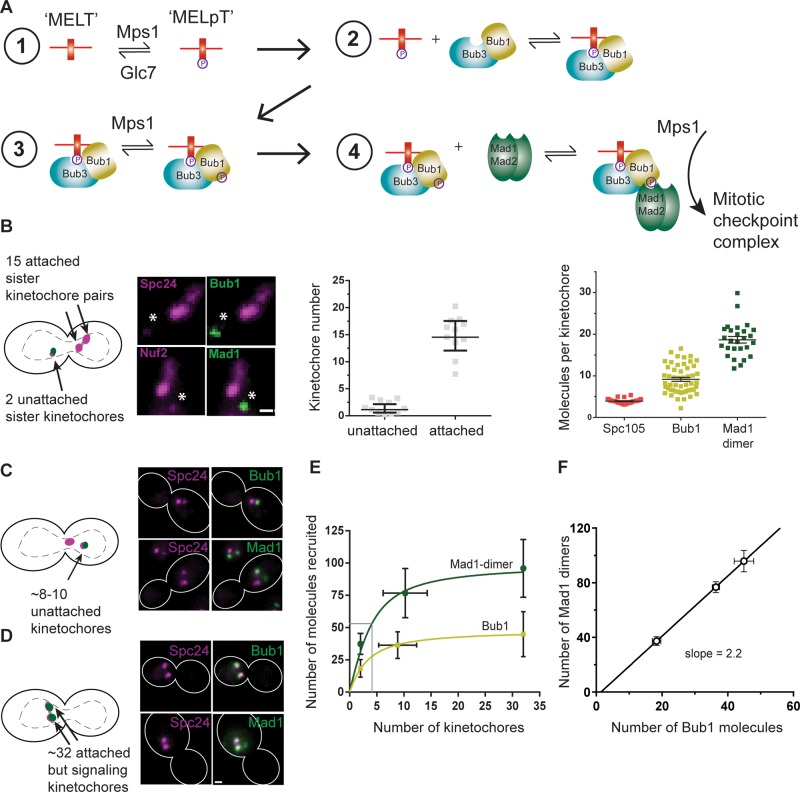FIGURE 1:
Steady-state binding of SAC proteins to the kinetochore scales inversely with the number of signaling kinetochores. (A) Schematic of the biochemical reactions that recruit SAC proteins to an unattached kinetochore and generate the mitotic checkpoint complex. Cdc20 and Mad3/BubR1 are not shown. (B) Cartoon, one unattached sister kinetochore pair created using a galactose-repressible centromere as described previously (Tanaka et al., 2010). In these cells, the 15 bioriented kinetochores appear as two puncta ∼800 nm apart, whereas the unattached kinetochore pair appears as a diffraction-limited focus situated away from the bioriented kinetochores (asterisk in the micrograph; scale bar, ∼0.53 μm). This unattached sister kinetochore pair recruits Bub1 and Mad1. Middle, expected numbers of kinetochores: 15 in the puncta corresponding to the bioriented kinetochores and 2 in the focus corresponding to the unattached sister kinetochore pair, confirmed by quantifying the fluorescence of mCherry-labeled Ndc80 complex subunits. Right, quantification of Bub1 and Mad1 molecules recruited per kinetochore (mean ± 95% confidence interval). (C) Cartoon, spindle depolymerization by the microtubule poison nocodazole creates two or more kinetochore clusters in mitotic yeast cells. Kinetochores in larger cluster, which is situated proximal to the spindle pole, do not recruit any SAC proteins. Kinetochores in the smaller cluster recruit SAC proteins (micrographs). (D) Forced localization of Mps1 to the kinetochore using rapamycin-induced dimerization induces SAC signaling from all 32 kinetochores (Aravamudhan et al., 2015). Scale bar, ∼0.96 μm (C, D). (E) Number of Mad1 dimers and Bub1 molecules recruited as a function of the number of signaling kinetochores in the cell. Solid lines display model fit for a bimolecular reaction limited by the abundance of soluble proteins (mean ± SD). (F) Scaling between the number of Bub1 molecules and the number of Mad1 dimers recruited by signaling kinetochores in each of the three foregoing experiments (mean ± SEM).

